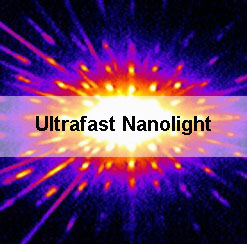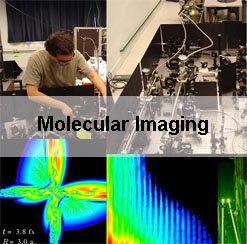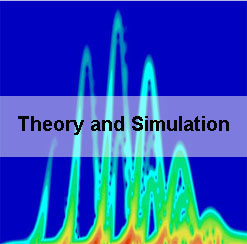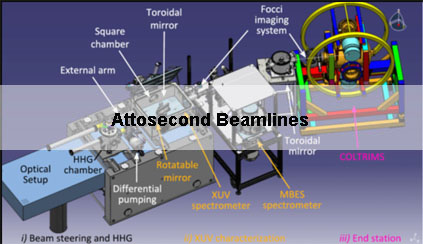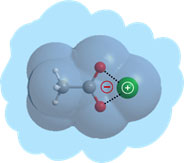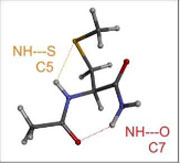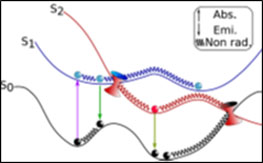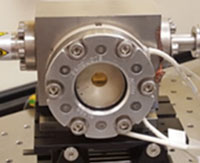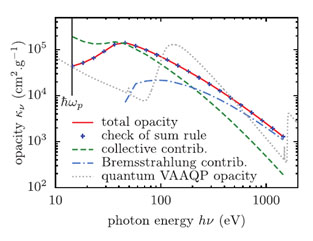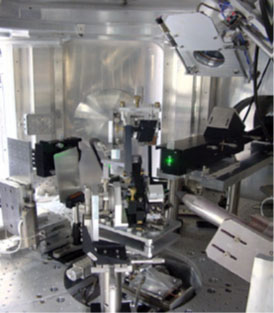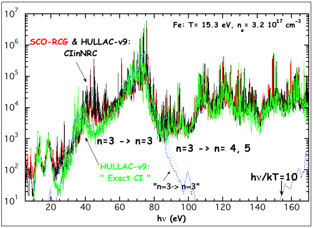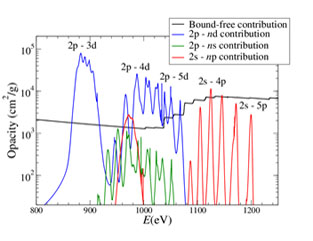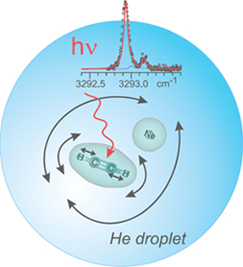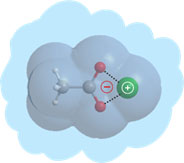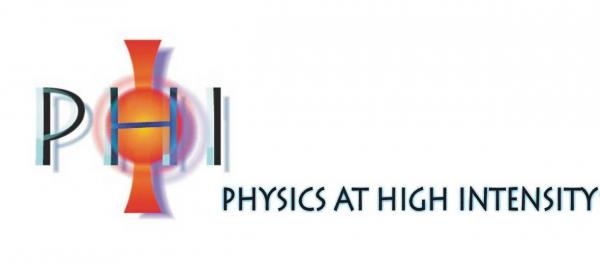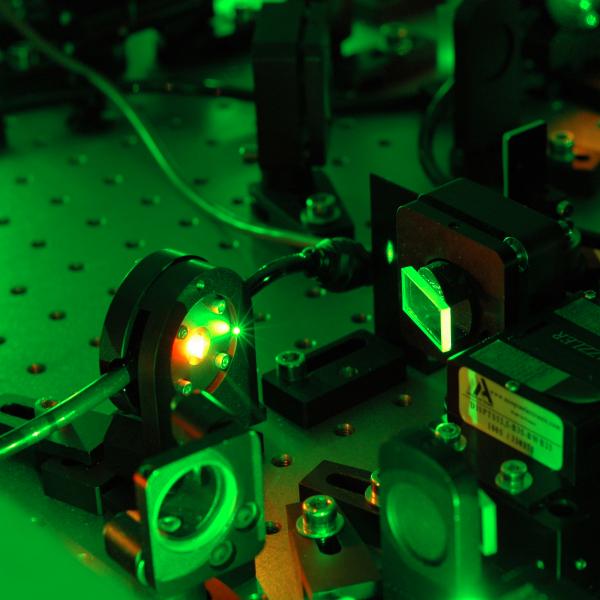|
Head of Attophysic group : Pascal SALIERES Scientific goalsIn the last ten years, the development of perfectly controlled femtosecond laser pulses at high intensities and few-cycle duration has opened a whole new range of opportunities. Indeed, this allows controlling with fs/as precision their interaction with matter and, in particular, creating secondary sources of XUV radiation in the attosecond range (1 as= 10-18 s) using the high harmonic generation (HHG) process. These advanced femtosecond/attosecond sources allow probing the structure and dynamics of matter on the atomic/electronic timescales and lengthscales (Angström). This has become a hot topic in the scientific community with intense international competition.
Based on the expertise accumulated over 30 years of intense laser-matter studies, the main goals of the Attophysics group in the last five years have been the following: I) Understand and control the laser-driven rescattering dynamics of an oscillating electron with the ion core, that leads to a number of important processes, such as electron-ion elastic scattering, multiple ionization or recombination with emission of attosecond pulses of XUV light II) Develop the attosecond technologies, i.e., the synthesis of attosecond sources with controlled properties (polarization, single/multiple pulses separated in space/time, …), their advanced characterization using attosecond metrology, the buildup of integrated attosecond beamlines stable and reliable for users III) Develop new types of spectroscopies (high harmonic spectroscopy, attosecond photoionization spectroscopy) making use of the attosecond emission in order to study ultrafast electronic and nuclear dynamics in the gas phase as well as in the solid phase. IV) Develop new (lensless) imaging techniques in the XUV with high temporal (atto/femto) and spatial (nm) resolutions allowing the observation of various dynamical processes (spin reversal of magnetic nano-domains, biological cell imaging) V) Study high harmonic generation in solids (semiconductors, dielectrics, 2D materials: graphene, MoSe2) for applications to: ’all-solid-state’ attosecond emission, spatio-temporal manipulations, nanoplamonics, PHz optoelectronics…
|
|
Research topics
|
 |
|
Head : Gérard BALDACCHINO
The activities of the research group « Dynamics and Interactions in COndensed phase » (DICO) are focused on physicochemical processes involving simple molecules, multichromophoric systemsand nanocrystals in solution, with particular emphasis on molecular interactions and dynamical aspects. It studies electronically excited states and their relaxation, energy and charge transfer, ionization, radical formation and reaction dynamics using steady-state and time-resolved optical spectroscopy (absorption, fluorescence), from femtoseconds to milliseconds. The main topics are:
|
Historically linked to the application of lasers to physical chemistry, the activity of the "BioMolecular Structure" group is focussed on the interaction of complex molecular systems with light, in particular, neutral flexible molecules and models of biomolecules, isolated in the gas phase. The general scientific objective is to document, through various laser spectroscopies and theoretical modeling, the interactions encountered in these systems, both in their ground and excited electronic states. One of the challenges is then to resolve the conformational, tautomeric, etc. complexity of these objects in order to document the role of the structure on their dynamic properties, in particular their electronic dynamics, through pump-probe type experiments. This program is achieved thanks to a strong synergy between experiment and theory, made possible by the simultaneous presence of these two skills within the team, made up of chemists and physicists.
Most of the activity is organized according to three key topics, related to the structure and electronic dynamics of flexible systems and biomolecules, and to a valorisation action.
|
|
|
|
|
|
|
|
|
| Excited state dynamics |
|
The "BioMolecular Structures" team is located in building 522 of CEA Saclay. It maintains its own fleet of nanosecond lasers and uses the femtosecond / picosecond lasers of several facilities : LUCA / ATTOLAB at Saclay, CLUPS at Paris-Sud University as well as the SOLEIL Synchrotron. It also maintains its own fleet of workstations (~ 4 knots / 50 procs) and uses the national resources of the "Calcul Intensif " (TGIR GENCI & CCRT-CEA).
| • Members |
| • Affiliations |
| • Collaborations |
| • Funding |
| • Former members |
Contact : Thomas BLENSKI
The group activity is devoted to electronic and radiative properties of warm dense plasmas. Our work has important implications in the field of energy, particularly in the inertial fusion sciences. We develop models of atoms in plasmas and methods aimed at obtaining their equation of state. In order to validate the theoretical models, we perform campaigns on large laser facilities, such as series of opacity measurements on the LULI-2000 laser facility at Ecole Polytechnique.
This domain is both fundamental and applied. Among the fundamental issues stands the physics of strongly coupled Coulomb systems. Our activities are naturally connected to inertial fusion and astrophysics where the “exotic” physical conditions of the matter that we are studying are common. In inertial fusion radiative phenomena are crucial for the energy transfer inside the plasma. Therefore radiative opacities as well as equations of state in dense plasmas are necessary to the model inertial confinement fusion scenarios. In astrophysics the radiative transfer phenomena define in particular the position of the transition between convective and radiative zones in stellar interiors, or the pulsation period of the beta-cephei stars.
|
|
|
|
|
|
|
|
|
|
|
|
The Francis Perrin Laboratory carries on research in the field of physical chemistry. A large part of the projects is dedicated to the interaction between light (UV-visible-IR) and molecular systems and are pursued along four interconnected objectives:
- Describe the fundamental processes involved when light interacts with a molecular system, e.g. processes relevant to femtochemistry or induced by collective effects (biomolecules, clusters)
- Unravel the mechanisms underlying natural phenomena, such as protein folding or carcinogenic mutations, by using light
- Contribute to the development of nanoscience and nanotechnology
- Elaborate new applications in the field of environment, alternate energy resources, health…
The research group "LUmière - MOlécules - LUMO" gather under the same entity within LIDYL, the team "Reaction Dynamics-DyR" and the team "BioMolecular structures - SBM".
The group LUMO, standing for “Lights and Molecules” (“Lumières et Molécules” in French), is active in the field of physical chemistry in the gas phase. Our research is focused on the interaction of complex molecular systems with light, isolated or in aggregates, with the general scientific objective of documenting, by various laser spectroscopies and by theoretical modeling, the interactions encountered in these systems, both in their ground and excited electronic states. One of the challenges is to resolve the conformational, tautomeric, etc. complexity of these objects in order to document the particular role of structure on their dynamic properties, in particular their electronic dynamics. This program is carried out thanks to a strong experience-theory synergy, made possible by the simultaneous presence of these two skills within the group, made up of both chemists and physicists, experimentalists and theoreticians.
Most of the activity, pictured through projects selected by the french funding agency ANR, is organized in three main topics, linked to: the structure and electronic dynamics of flexible systems and biomolecules (ESBODYR, ION PAIRS, TUNIFOLDS projects), the development and use of experiences and innovative sources (GOUTTELIUM device, ION PAIRS and VAPOBIO projects) as well as a valuation / application activity within the framework of an NRBC topical action.
The "LUMO" team is based on the CEA Paris-Saclay campus, buildings 522 and 462. It has four gas phase physico-chemistry set-ups, equipped with innovative sources (laser desorption, dissolution in supercritical CO2, hosting in helium droplets), irradiated by the light of its own laser sources (ps, ns or continuous) in the UV, visible, mid- and far-IR. Finally, it maintains its own workstations (~ 4 nodes / 50 procs) and uses the national resources of “Intensive Computing” (TGIR GENCI & CCRT-CEA).
The LUMO-DyR team joined the LUMO-SBM team to form the LUMO research group.
The Reaction Dynamics Group (LUMO-DyR) is interested in the photo-induced dynamics of isolated systems: organic molecules, radicals, molecular clusters, Van-der-Waals clusters. The reaction dynamics of these systems is obviously related to their structure. Therefore, the Reaction Dynamics group combines time resolved dynamics studies structural ones. Our experimental work is systematically supplemented by theoretical modelings. These are conducted either through external collaborations or directly in the team. Our work focuses both on the intrinsic dynamics of model systems without interaction with an external environment and on solvation processes by depositing these species with solvent molecules on a rare gas cluster.
The LUMO-SBM team is gathered with the LUMO-DyR team, to form the LUMO research group. Its research domain is the application of lasers to molecular physics and chemistry, and is focused on the interaction of complex molecular systems with light. It studies in particular (but not exclusively) neutral molecules, models of biomolecules isolated in gas phase. The general scientific objective is to investigate, by various laser spectroscopies and theoretical modeling, the interactions encountered in these systems, both in their ground state and in their excited electronic states. One of the stakes is then to solve the conformational, tautomeric, etc... complexities of these objects in order to document the role of the structure on their dynamical properties, in particular their electronic dynamics, through pump-probe type experiments. This program is realized thanks to a strong experiment-theory synergy ensured by the simultaneous presence of these two competences within the team, made up of chemists and physicists.
Cliquer ici pour consulter le nouveau site 'Supports et Lasers à Impulsion Courte'
L'équipe SLIC (Supports et Lasers à Impulsions Courtes) est un groupe de développement laser et de support technique. La mission principale de SLIC est de fournir des lasers de pointe pour les utilisateurs internes (LIDYL) et externes (nationaux et internationaux).


